9 Veggies for your Salsa Garden
We are going to start with the base of your salsas – tomatoes and tomatillos. 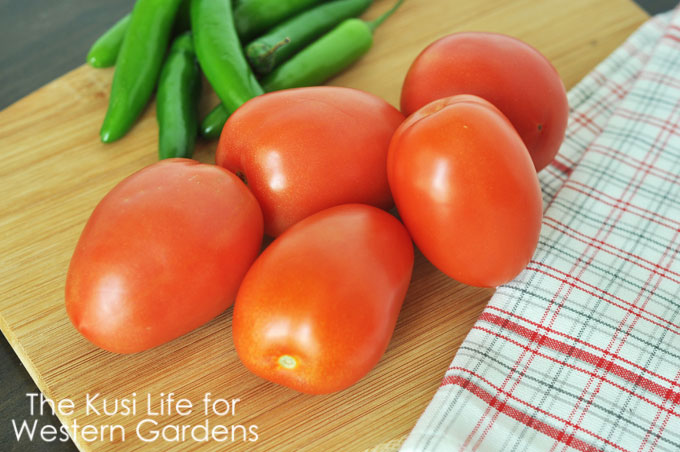
Tomatoes are the largest plant in your Salsa Garden and can be planted in the middle of your garden, or along the front of your garden. This will help you avoid the tomato plants from shading out the other plants. My personal favorite for pico de gallo and salsa is the Roma Tomato, they have less juices and seeds compared to the larger tomatoes and make your salsa extra delicious! Check out this great post for 10 varieties you should grow!
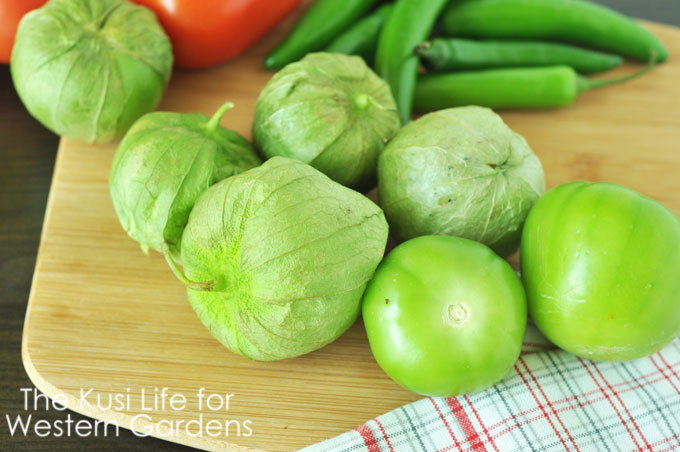
I often get asked about what tomatillos are – well, they are similar to a tomato, but they are green. They have a husk around them, and when you remove the husk they ‘re slightly sticky. The tomatillo is perfect for salsa verde and give it a fantastic flavor!
Tomatillos are not self-fertilizing, which means that you will need at least two plants in order to get some fruit, so have a few plants and you will enjoy salsa verde throughout the Summer. Because the tomatillo is native to hotter climates, make sure you have well-drained soil in order for them to thrive, and ensure they get plenty of sun throughout the day.
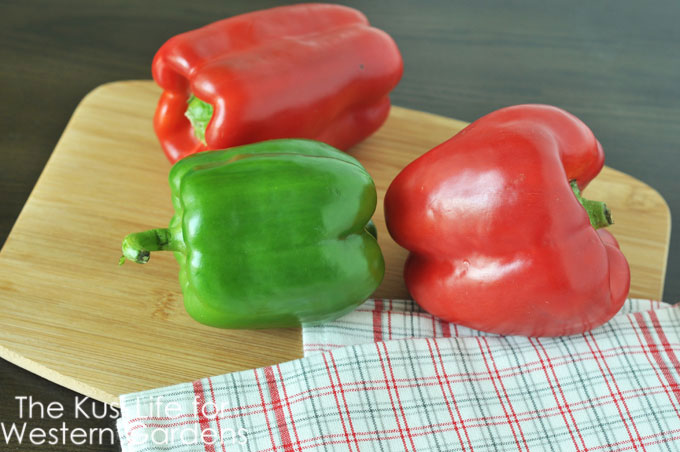
Sweet peppers are the perfect addition to a red salsa, and are great if you have kids or people who can’t handle a lot of heat. They are the next smaller plant in a salsa garden, and would be great on the side of the tomatoes, or in a row in front of them. Sweet peppers love lots of sun (about 6 hours a day) and need to have well-drained soil in order to thrive.
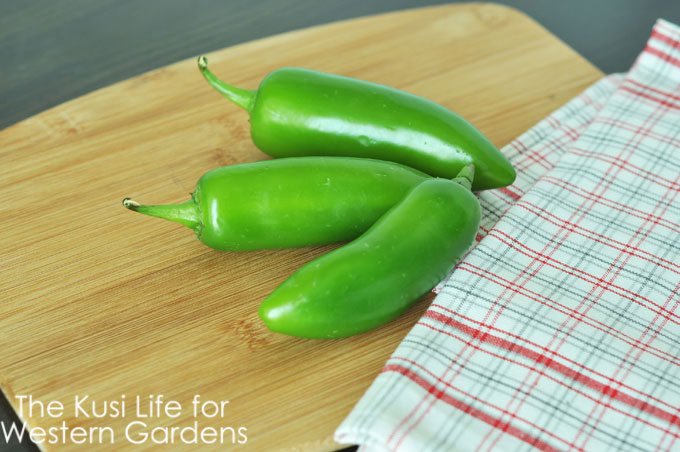
Jalapeños are one of the most common peppers in a good red salsa. They have a mild amount of heat that most people can handle. Plant jalapeños along with your sweet peppers, and just make sure you have well-drained soil. When handling fresh jalapeños, always wash your hands really well, especially after cutting them, otherwise if you touch your face or eyes, you will feel some pretty intense burning pain!
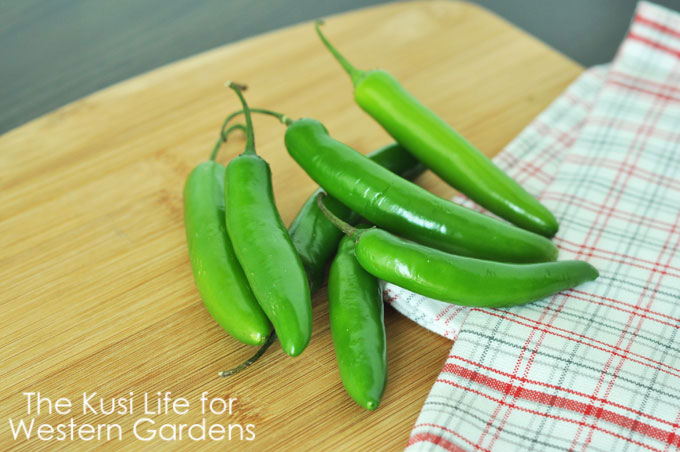
The other hot pepper to have in your Salsa Garden is the Serrano pepper. Serrano peppers are a medium-heat pepper and are perfect for your salsa verde. Just like the others in the pepper family, you need to make sure your plants get a good amount of sunlight, and have well-drained soil. Plant them along with the other peppers 16-18 inches apart.
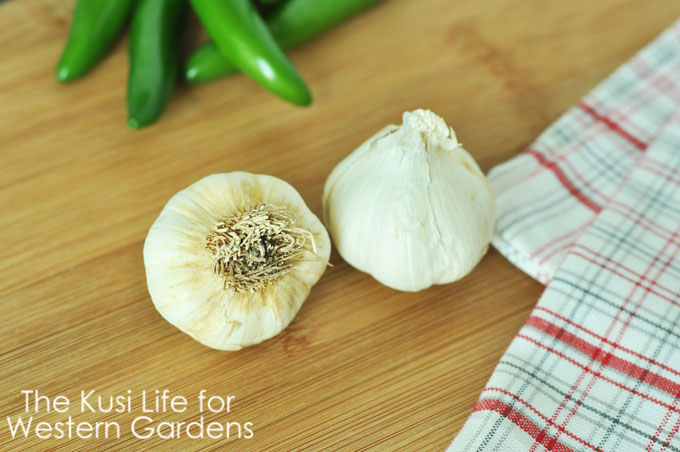
Garlic is a good idea to plant in the fall in order for you to harvest in the early Summer, but can also be planted in the Spring, you will just get to harvest it later in the season. Garlic is an easy plant to grow and is necessary for any salsa recipe. Because garlic is so small, it is a good one to plant to have scattered throughout your garden (avoid planting near beans, peas, parsley, and sage, as garlic will stunt their growth). You will harvest the garlic when it begins to yellow and fall over, but before it completely dries out.
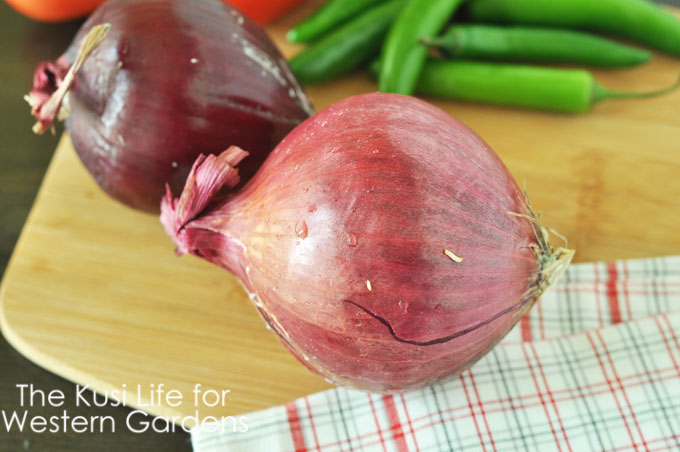
Red onions are perfect for pico de gallo and offer a fantastic flavor for fresh salsa and guacamole. Plant them in late March to early April to get onions in about early August. Just like garlic, they are small bulbs you plant in the ground, and they actually do really well here in Utah. Plant them where they will get plenty of sun, and have well-drained soil.
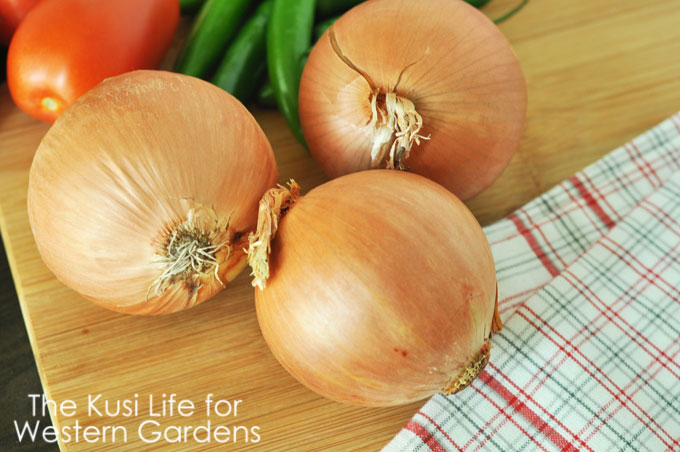
The yellow onion is better for red salsa, salsa verde, or cooking. Just like the red onion, make sure they get plenty of sun and have well-drained soil. Onions are ready to harvest when their leaves begin to lose their color and they flop over. Once they have fallen down, mark your calendar for 10 days to 2 weeks to allow the onion to fully mature before pulling them out of the ground. Leave them out in the sun for a day (or a few hours, if you live in a hot area) so the sun will kill the root system, which will help your onions keep longer.
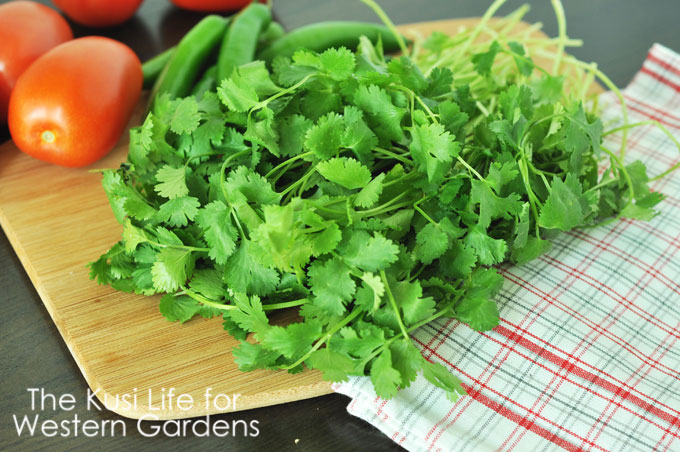
Last but not least, you absolutely need cilantro in your Salsa Garden! Keep it in a pot or plant it around the tomatoes and peppers. Cilantro is a must for pico de gallo, and adds amazing flavor to your salsa and guacamole recipes. Cilantro grows very quickly and can be harvested about every 3 weeks. You can add new seed every three weeks so you can enjoy it all season. You can just cut the stems at the bottom near the soil when you are ready to enjoy it.
If you see anything out of the ordinary – like small holes in your leaves, bottom rot, discolored stems etc, you need to make sure to do research to find out what type of pest or virus could be affecting your plants and find a solution quickly to make sure you get the most out of your garden.
Click NEXT to see just the list of 9 veggies to plant!
Latest posts by Kirsten (see all)
- 3 Ways to Get Rid of Snails - July 10, 2016
- 5 Reasons You Need Drip Irrigation - July 5, 2016
- 9 Plants you need for your Salsa Garden - May 14, 2016
